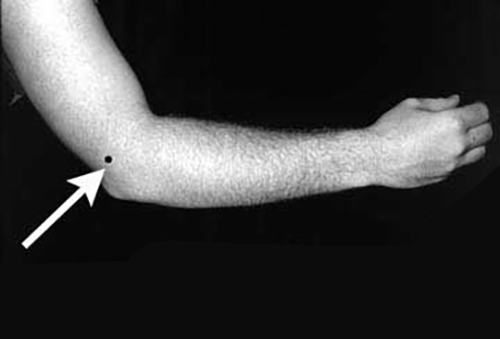
General Information: Lateral Epicondylitis (Tennis Elbow)
Tennis players and golfers are familiar with elbow pain. But baseball players, home fix-it enthusiasts and gardeners also may experience the symptoms of “tennis elbow” or “golfer’s elbow.”
Tennis elbow is a painful condition on and around the bony prominence (epicondyle) on the outside (lateral side) of the elbow (arrow, above left). This location gives tennis elbow its technical name: lateral epicondylitis. Pain may radiate down your arm. Gripping or extending your wrist may intensify the pain.

Golfer’s elbow describes a similar condition. The pain focus is the knobby bump on the inside of the elbow closest to the body (the medial side), so it is technically known as medial epicondylitis.
Both tennis elbow and golfer’s elbow typically result from repetitive arm movement. Over-using the muscles in your arm can lead to tiny tears in the tendons that attach the muscles in your forearms to the epicondyles. If you continue to do the activity without allowing the tears to heal, the tendons can become inflamed. This condition can be caused by excessive use of your arm in long sessions practicing your golf swing or tennis stroke and in many other activities, including painting, raking, pitching, rowing, hammering and using a screwdriver.
If you’ve increased your activity in one of these areas and feel tenderness in the elbow or pain that radiates down the arm, take some time off. Stop doing whatever is causing the symptoms. Rest allows the microtears to heal. If the symptoms are sports-related, you might examine your technique and equipment.
Conservative treatment usually works. Applying ice helps reduce swelling. An anti-inflammatory medication, such as aspirin or ibuprofen, can also help. If symptoms don’t subside in two or three weeks, call your doctor. If initial rest is not successful in resolving the symptoms, an official course of therapy with a certified hand therapist will relieve the symptoms in 90% of patients. The remaining 10% (that have not responded to therapy) typically require surgical resection and repair.
